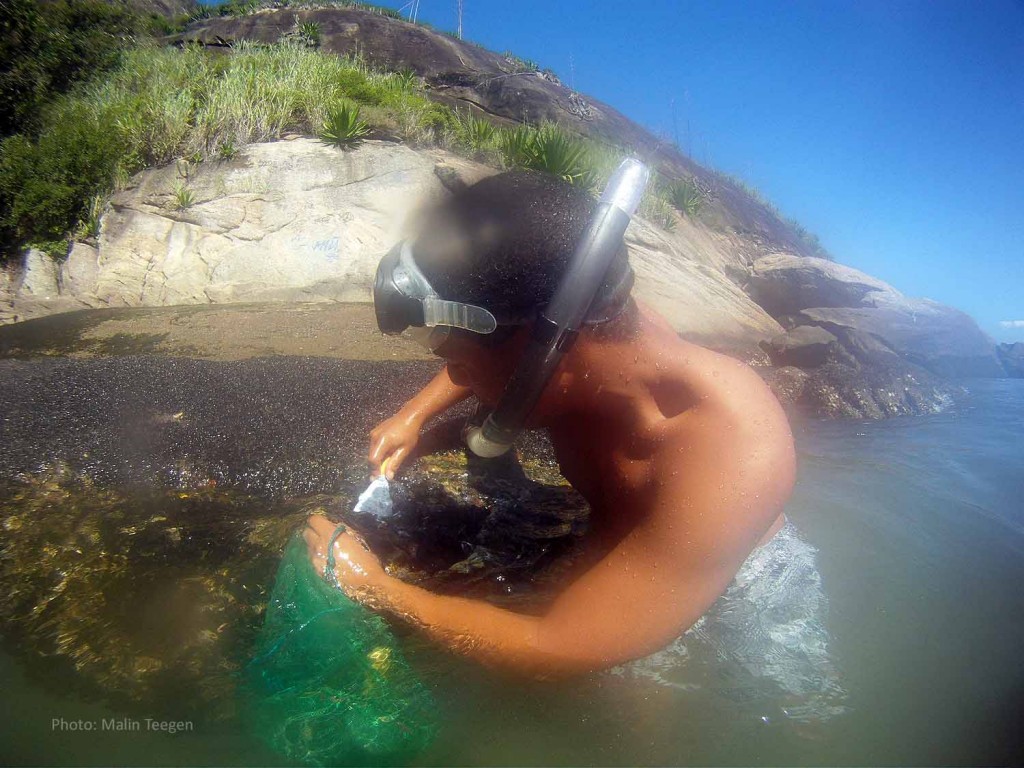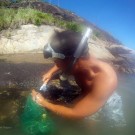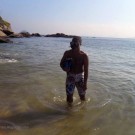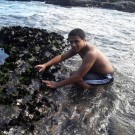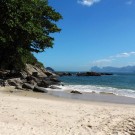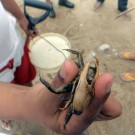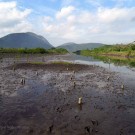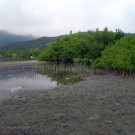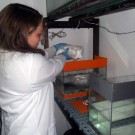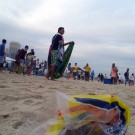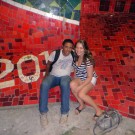By Bruno Nogueira Lobo, Team Brazil
Hi everyone! It is time to write about our work in Brazil. We arrived in Niterói in April and we started with our pilot studies already soon after this. However, from the beginning on we had various problems. First, like many of this year’s GAME teams, we needed to wait for the delivery of the microplastic material and the fluoranthene, which we use as a pollutant in our study. Both, the plastic and the fluoranthene, were ordered in Germany and they needed to be sent to Brazil and this took much longer than expected. Additionally, we faced another problem that was not directly associated with our experiments: The employees of Universidade Federal Fluminense are on strike. So, so far my team partner Malin did not even get to know our cheap but excellent university restaurant, where the meals just cost Br$ 0,70 (€ 0,20). Luckily, not everybody is absent. The university driver, for example, still takes us to the field every time we need to go for sampling or for collecting test animals (we are not allowed to drive the university’s cars ourselves). Furthermore, we still have classes, since the professors are still at work.
When we started, we first tested different kinds of experimental set-ups to see which are the most suitable ones for our experiments. The one for the deposit feeding animals was easy, because we could benefit from the experiences made by Erica and Dennis. Last year, the two performed similar experiments with the fiddler crab Uca rapax and we will use the same species. However, this year we also needed to find a feasible solution for the second type of organism that we are working with: the filter feeder Perna perna. The so-called brown mussel lives in the intertidal and is common along the Atlantic coasts of South America, the west coast of Africa and, since recently, also in Southern Europe. For this, we built two tank systems, one with a seawater flow-through and one with strong aeration. Finally, we chose the second one, because it ensures a better re-suspension of the microplastic. With the first set-up, we would have needed to re-suspend the microplastic manually and we realized that this method would not simulate the re-suspension of the microplastic material properly. In the second set-up, we have two air bubbles stones in each container. The first of them is always active to provide an optimal oxygen concentration for the mussels. The second one works only for two time periods per day to produce a strong water circulation that re-suspends the microplastic – equivalent to what happens in a tidal environment. We are controlling the air stream with a timer that is connected to the pumps that fuel the bubble stones.
Two further important aspects of our work are the installation of sediment traps and the exposure of microplastic particles in the field. The first serves to measure the amount of sedimentation at the site where we collect our filter feeders, while the exposure of microplastic particles is important for checking whether the seawater in Guanabara Bay contains fluoranthene. The two structures were constructed in a similar way and they were both problematic. Malin and I decided to build something with PET bottles that were cut open and metal weights for the sediments traps. The bottles served as funnels to collect the sinking sediment. Microplastic exposure was realized with small glass containers that were fixed to weights and a buoy and they were all covered with a silk mesh that permitted the water to get in but retained the plastic particles. Unfortunately, both concepts did not work out properly, because of the rough wave conditions in the field. Unfortunately, we are too busy these days with starting the main experiment, so we cannot continue with this work. However, we are planning to test a new type of sediment trap and to choose another, calmer site to expose the microplastic later.
Now, we are starting our main experiment in which we will expose 90 individuals of U. rapax and 75 of P. perna to different concentrations of polluted/non-polluted microplastic. We will therefore have several treatment groups with different concentrations of plastic particles and the presence or absence of fluoranthene. We feel well prepared because of all our various pilot studies and because the microplastic material that we are going to add during the experiments has already been incubated in fluoranthene-loaded seawater. Furthermore, we already collected our crabs and mussels and the experimental set-up is ready. Currently, the organisms are in the acclimation period so that they get used to the lab conditions. Though we faced many difficulties in the beginning, we are now having a good time in Brazil.
What about us? We make some jokes and we say that we are like a family. Malin is the wife, I am the husband and our assistants are the kids. Sometimes, we have a feeling that we do everything together, especially when we need to buy things for our home: THE LAB!
What about the world cup? Well, actually, we have a troublesome relationship with this huge event. It is awesome to watch the football games, but it slows down our work in the lab. For example, we cannot start the experiments with the filter and deposit feeders at the same time, because we are still waiting for the pump, which we bought, to get delivered. It did not come yet, because Brazil won another game and we will have one more day off in Brazil. Anyway, in the end, WE ARE LOVING IT! Days with Brazilian games and with games in the Maracanã Stadium of Rio de Janeiro are holidays for schools and universities. Other people work half days before a football game or they have a short break before and after it. However, GAME students have the permission to work in the university also on weekends and during the holidays. Anyway, we always find a “jeitinho brasileiro” to get our work done. This means “little Brazilian way” to solve a problem. Sometimes, I work during weekends and my resting days are when the Brazilian team has a game. On other days, we listen to games of the German team on the radio together with our crabs and mussels in the lab. The good thing is that we have student assistants who help us in the lab – of course not during the Brazilian games.
What about my country during these weeks? There is no violence, there is no terrorism and there are no protests anymore. This world cup has been considered the world cup of love for Brazilians and for the visitor! The GRINGOS (popular Brazilian term to foreigners) are saying that the best part of Brazil are the BRAZILIANS. In my city, Rio de Janeiro, we currently can see Argentineans and Chileans camping at Copacabana Beach, Dutchmen dressed in orange at all times, lost Japanese looking for tourist points and, of course, Germans drinking beer and hugging each other. In fact, Malin is one of the few foreigners who work here during the world cup.
It is also interesting to realize how closely our research topic is related to the world cup. When people watch the football games, a lot of trash is produced, especially plastic bottles and mugs. I saw it even in Copacabana Beach, which is one of the most famous places here. It means that our work is very important and that we can help to show that plastic pollution is dangerous for the marine environment. No matter the games, no matter our hangover, the Brazilian GAME students keep on working. The most important thing is that we learn more and more everyday and always try to improve our experiments. OBRIGADO!
- Bruno collecting Perna perna in Itaipu, Niterói.
- Perna perna grows on rocks in the intertidal and shallow subtidal.
- Itaipu Beach in Niterói.
- Our deposit feeding test organism. The fiddler crab Uca rapax.
- Itaipu Lagoon where we collect the fiddler crabs.
- Mangroves are the typical coastal ecosystem in this region.
- Malin in the lab, preparing the fluoranthene incubation of the microplastic material.
- Copacabana during a Brazilian game.
- Team Brazil: Bruno Nogueira Lobo and Malin Teegen.
